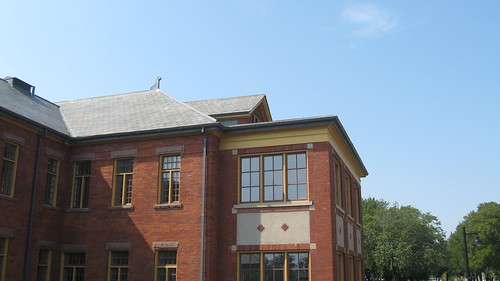
Back in high school, when I was considering which university to go to after graduation, I don’t think that the idea of place ever crossed my mind — at least not in any more serious a way than wanting to be far enough away from home so that I had to move out of my mother’s house and live on-campus. I was more concerned with my program choice and whether or not I would get locked into a bad meal plan than with how each school’s campus functioned, looked, and felt. Almost fittingly enough I ended up at a school without a traditionally defined campus (everything is essentially contained within one building), and now that I’m graduating this coming year, after several years lamenting the lack of facilities and atmosphere common to many other schools, I see how important the idea of place is. Over the last few weeks I have had the opportunity to learn about and visit many of the university and college campuses in Toronto (one of which I would have likely gone to had I chosen to stay at home for school), and with my outsider’s eye looking in, have prepared a series of small profiles on the different schools and their places within the city.
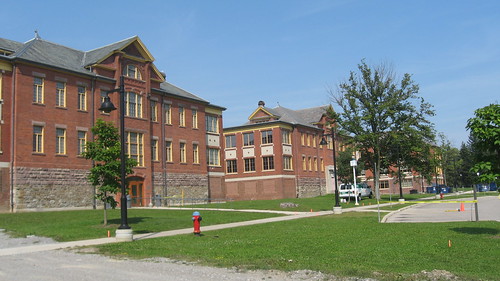
The first campus that I visited was Humber College’s Lakeshore Campus, in the Etobicoke neighborhood of New Toronto, near Lake Shore Blvd. and Kipling. Like many of the colleges in Toronto, Humber was established in 1967 after the Ontario Minister of Education, William C. Davis, introduced a bill in 1965 to create a post-secondary education system independent of the universities. Many of the buildings at the Lakeshore Campus were built long before the 1960s, however, originally serving the former Lakeshore Psychiatric Hospital before Humber took them over to develop them into classroom, recreation and administrative spaces. The Lakeshore Psychiatric Hospital was opened in 1888, known then as the Mimico Lunatic Asylum, and is made up of a series of cottages and small hospital buildings clustered within a 15.6-acre park setting. Incidentally, the campus might also look familiar to some as the training grounds for new recruits in the film series Police Academy, the first of which was filmed in the early 1980s after the hospital closed, but before Humber took the campus over.
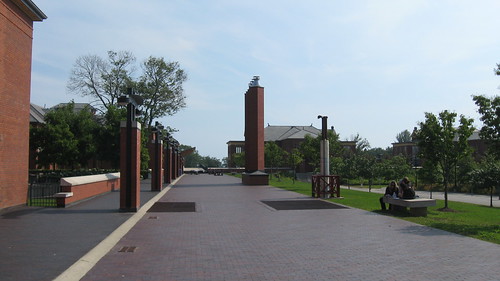
Since 1991, Humber has been redeveloping the property into classrooms, offices, and rec space, but since the property is a designated heritage site, Humber has had to sensitively restore the original buildings. Although some modern interventions are evident (but cleverly integrated — like the overhangs in front of many of the cottages’ doorways, and the new lamp standards along the walking paths, which reference the original buildings without being cliché), being on campus feels like stepping out of the city and into a traditional, collegiate atmosphere. This old-world feeling changes of course is when you step into one of the cottages and look into some high tech computer labs or modern-looking classrooms.
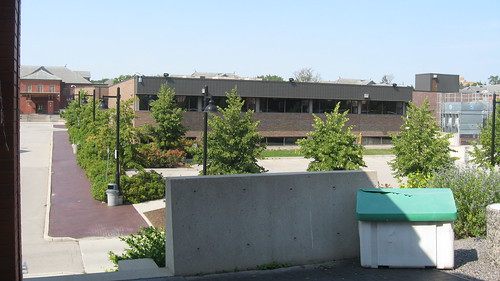
The most unfortunate part of the campus, which was not built by Humber but added during the last few years that the site was used as a psychiatric hospital, is a squat, factory-like building in the middle of a loosely formed quadrangle bound by a group of the original cottages. Built in 1974, the space was for assembling furniture and picture frames, and is now used as a theatre space. Without that building there, I can picture the quadrangle as a great commons for students to meet and relax (in the warmer spring and fall months anyway), but the fact that Humber has turned the building into something useful is probably better than tearing it down simply because it’s unattractive, keeping with the campus’s theme of revitalizing what is old into something new.
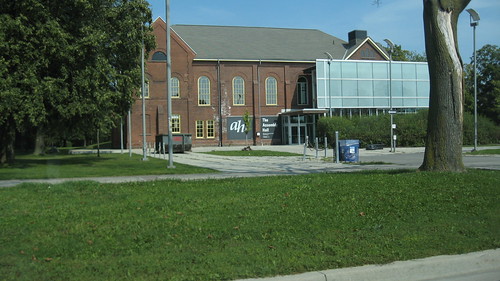
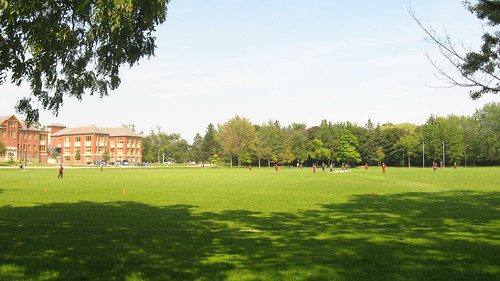
The old hospital buildings are attractive in and of themselves (including the Assembly Hall, pictured above, which was originally built by patients of the hospital in 1897 as a recreation space), but the surrounding landscape is also beautiful. Behind the buildings is an open field where people were playing cricket while I was there, and beyond that is Colonel Samuel Smith Park that sits right on the lake. Although I’m sure that being at the Lakeshore Campus is cold in the winter, in the late spring, summer, and early fall this place would be absolutely gorgeous.
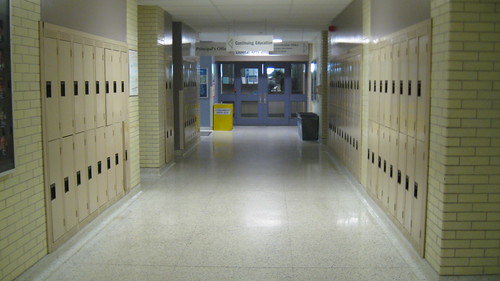
Just west of this part of campus, a short walk away, are some of older Humber College buildings, as well as a relatively new residence, student centre, and bookstore that opened in 2004. Walking around here feels like tracing Humber’s more modest roots as a college (Humber started at the Lakeshore campus), before it grew into a school with over 18,000 full-time and 50, 000 part-time students with two large campuses in Toronto, and a third under development in Orangeville. This part of campus looks more like a high school that grew into a college through additions and renovations, and feels like on one the inside with its locker-lined brick hallways and terrazzo floors.

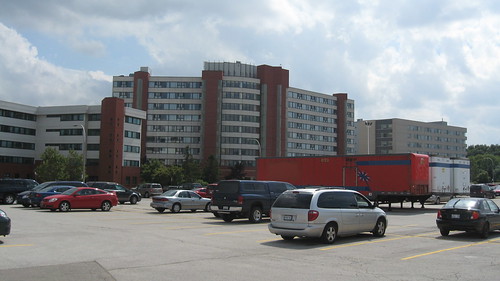
In comparison to Humber’s Lakeshore Campus, the North Campus is quite a contrast. The majority of Humber’s student body, over 12,000 full-time students, attends the North Campus, just north of Highway 27 and Rexdale Blvd. When I got to the North Campus, aside from reliving pleasant childhood memories of playing at the Fantasy Fair at the nearby Woodbine Centre, I couldn’t help but feel the campus was very suburban. Covered in parking lots and surrounded by sprawl, I wasn’t charmed the same way I was at the Lakeshore Campus. As opposed to a series of quaint, cohesive buildings, I could make out one large agglomeration of buildings on one side, and a series of residence buildings across a parking lot.
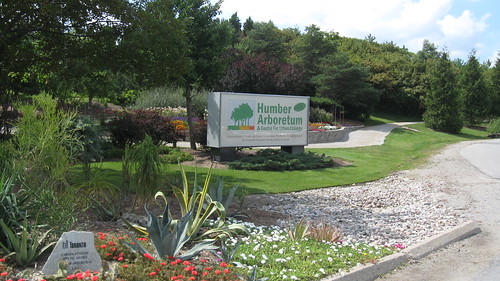

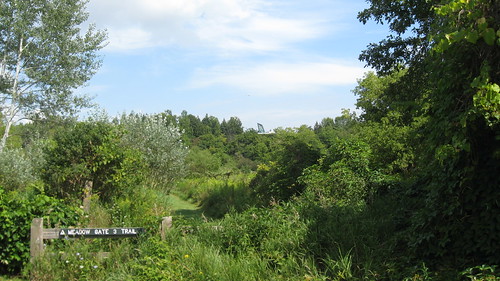
I didn’t really know where to go at first, there being no real draw or focal point to head towards, but I eventually walked over to the Humber Arboretum. I was really surprised at how beautiful this place is. A joint venture between the City of Toronto, Humber College, and Toronto and Region Conservation, the Aboretum was opened in 1977, and has recently added the slick, contemporary Centre for Urban Ecology. The building, which is LEED Gold certified, is hard not to appreciate — especially compared to the other buildings on campus — but is only one feature that makes the arboretum special, adding to the already amazing gardens, ponds, and meadowland that smells sweet with wildflowers.

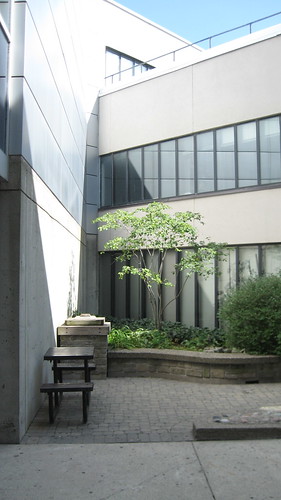
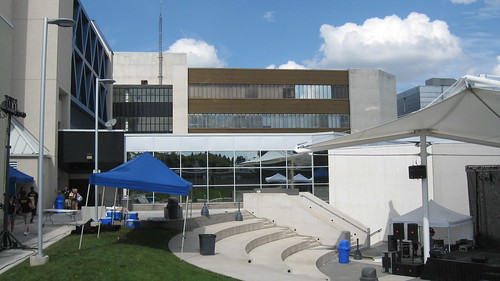
After I left the arboretum, I walked back to the main campus building and started to appreciate things a little more. Although not architecturally stunning by any stretch, the fact that all the buildings are connected together means that walking from class to class, particularly in the winter, is easy and comfortable (provided that you know your way around — there is nothing particularly intuitive about the building’s plan). I also noticed some more intimate meeting and sitting spaces, indoors and out, scattered around the building, including the oddly-shaped outdoor courtyard pictured above, as well as an outdoor amphitheater that looked like a good place to watch live music or even just relax between classes.
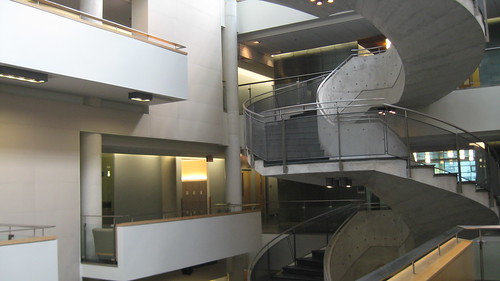
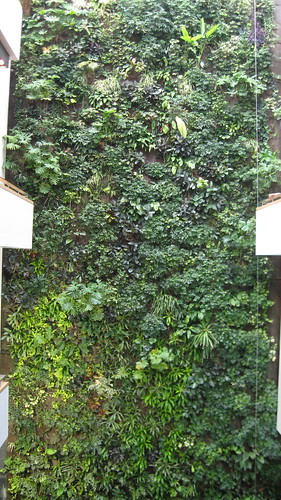
I also went into the new University of Guelph-Humber building, designed by Toronto’s Diamond and Schmitt Architects, where a interesting arrangement of protruding balconies jut into a multi-height atrium made vibrant at one end by an incredible living wall. The living wall is not only beautiful to look at but provides a bio-filter to clean the air circulating through the building.
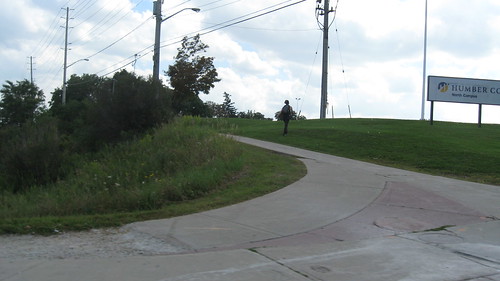
As I left the building I came back into one of the parking lots and looked back across to the residence buildings. Although certain aspects of the campus were interesting, I still couldn’t imagine myself at home here. Although there are over 1,000 student spaces in the North Campus residences, the majority of the over 50,000 full- and part-time students commute from elsewhere (as is evident by the expansive parking lots) — making the campus feel like a just another stop on the road to other things.



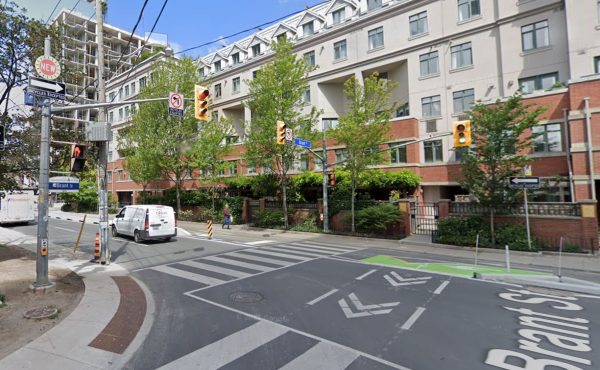
8 comments
The mid-fifties style building that looks like a high school was opened in 1958 as the Lakeshore Teacher’s College. One can only assume that the thinking in the 50s focused on giving the teacher trainees experience in a built environment similar to a real high school – even though in those days most teacher trainees went straight from grade 13 to Teacher’s College. That it changed to a community college only 10 years after opening is indicative of the rapidly changing ideas about education that burst out in the 60s.
Does the original (c1970) Humber College facilities still have any of its megastructural “style” left inside? It did last time I visited in 2000…
Yes it does, Adam. Worst campus by far (in TO) but the insides are kinda neat, but mostly confusing and unintuitive as humanly possible.
Bob, I think you may be right – the teacher’s college that is now part of Lakehead University in Thunder Bay has very much the same feel to it.
I have had the pleasure of finishing 2 programs at Humber one at the North Campus and the other at the Lakshore Campus. Which one did I like best? Well to get to both from Keele and Sheppard was well over an hour by transit. But you can do alot of reading in that time if you get a seat. To get to the Lakeshore campus was a bit of a drag. 41 bus to the end of the line. Subway west to the end of the line and the the Kipling bus to guess where? Yup the end of the line.
The social aspect of the NOrth campus was obviously better, Btter Gym, more people, bigger foot court and yea of course CAPS if it’s still around. I think I earned my diploma in Capsology. I can say I got way more work done at the Lakeshore campus due to its quite not much to do there feeling, which I guess turned out to be a good thing. So for me there a little bit of a balance here. Have a good time at one and be more studious at the other. Humber Rocks! Go Hawks Go!
Having worked at YorkU for the last 8 years I can’t wait to hear what’s said about this campus. Is something already posted yet? Let me check…
I have been to Humber, North Campus and I found it to be one of the nicest places around. The institute of health sciences there offers excellent course on nursing.
this college is so beautiful with high education facilties and practical works…..
In the middle 60’s I was only 10 years old and was there at Lakeshore. They gave me SHOCK TREATMENT!!!!
I am still to this day wondering if I can somehow get a compensation for this!!!!
Shame on the Ontario Government for allowing this.
Even though I was in the children ward when they needed to punish me they would either lock me up in this dingy room for a day without being able to use the bathroom or send me to an adult ward via the tunnels where I was sure to be sexually molested!!!
So there is your legacy, I had see all sorts of atrocities there and really the years I was there robbed me of my childhood!!!